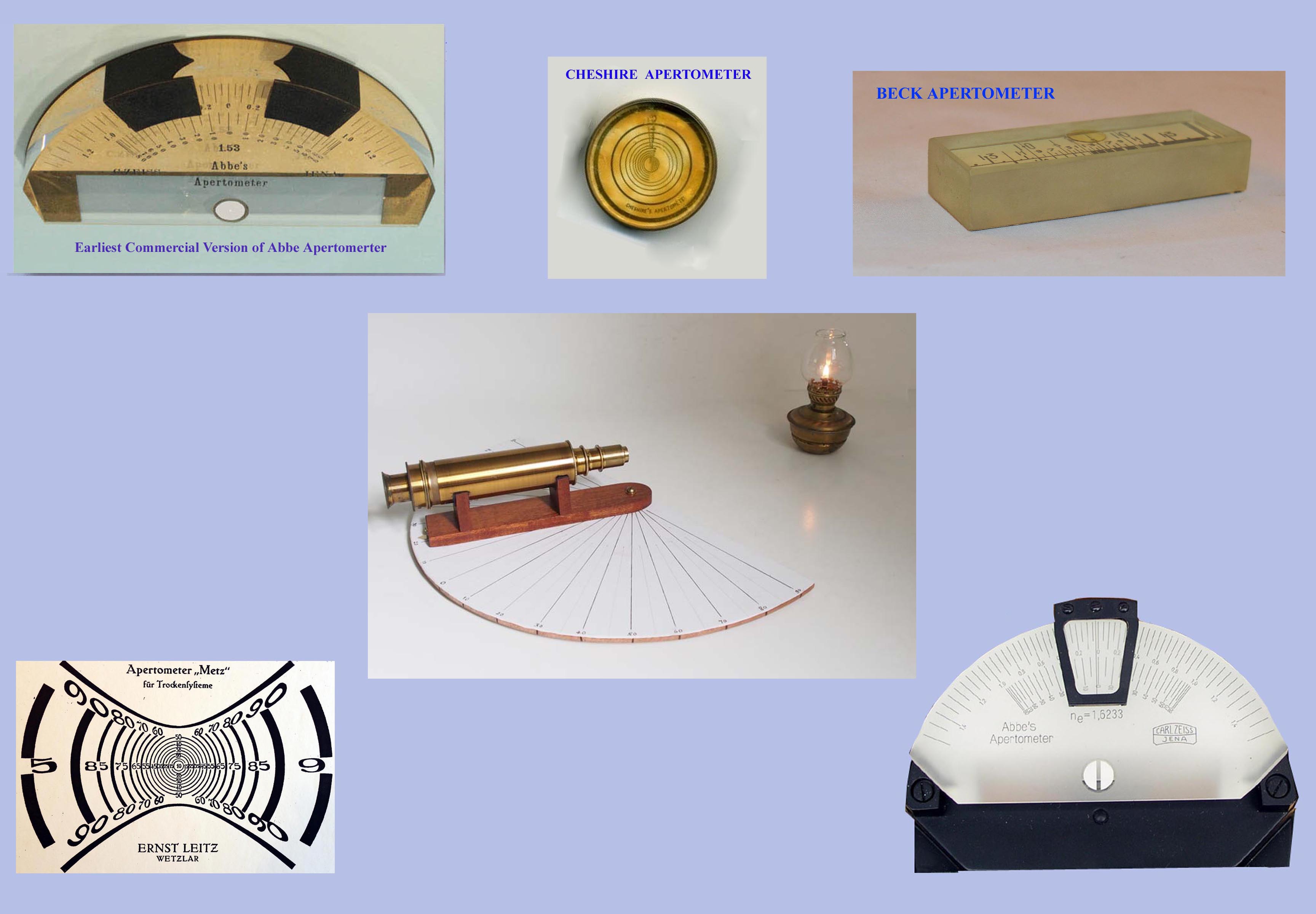
HISTORY OF THE APERTOMETER
Before the time of Abbe, the resolving power, of microscope objectives was measured in air with a simple device which placed a microscope tube horizontally on a protractor scale. Such a device, shown in the center of the image above, was produced by Smith, Beck & Beck, and others. The device was aimed at a distant point of light, and as the microscope was rotated, the angle through which the light source passed while visible in the back of the objective was noted. This angle of aperture was used to compare the resolving powers of objectives in air. This angle could not be directly compared to an objective using another medium, such as water or oil, as the angle in these other media cannot be directly compared to air.
Ernst Abbe was the first person to derive a single number which allowed direct comparison of the resolving power of all objectives regardless of the medium used between the objective and the slide. This quantity he called the Numerical Aperture(NA), and is calculated using the now famous equation:
NA = n sin α
where n=the refractive index of the medium (1.0 for air), and α=half of the measured angle of aperture. It was then possible to construct an instrument calibrated in NA instead of just angles, negating the need for calculating the NA for each measurement. Furthermore, these instruments, when constructed of glass, would allow NA measurement in oil or water as well as air.
Ernst Abbe produced his first apertometer in 1871, even before he described the concept of the numerical aperture (N.A.), and that original instrument is part of the collection of the London Science Museum. Sometime before 1880, Abbe developed his concept of NA. In this way, the resolving power and light-gathering of an ordinary 'dry' objective could be compared to an oil immersion objective. This led to the 'modern' apertometer and the first commercial examples were designed by Abbe and sold by his firm, Carl Zeiss. Nowdays, objectives are constructed to high standards, so that they are labeled with their actual N.A. and therefore the apertometer has become, to some degree, a relic of the past. Nevertheless, the Beck version was still being sold in the 1950's.
In the image above are shown a few of the many types of apertometer. The Metz apertometer (lower left in image above), is a simple version made of cardboard and can only be used to measure the NA of 'dry' objectives (those used in air without an immersion liquid). Cheshire was another designer of Apertometers including a card version similar to the Metz, and also a round glass version which could be used for both dry and immersion objectives.
The Late version of the Beck apertometer is a thick glass device on which the NA can be directly read, but the lines are distorted at the edges of the field. The
Abbe apertometers were certainly the most sophisticated of the commercial devices, and also the most expensive. Nevertheless, the Abbe apertometer, though uncommon, is still the commonest type seen today on the market.
